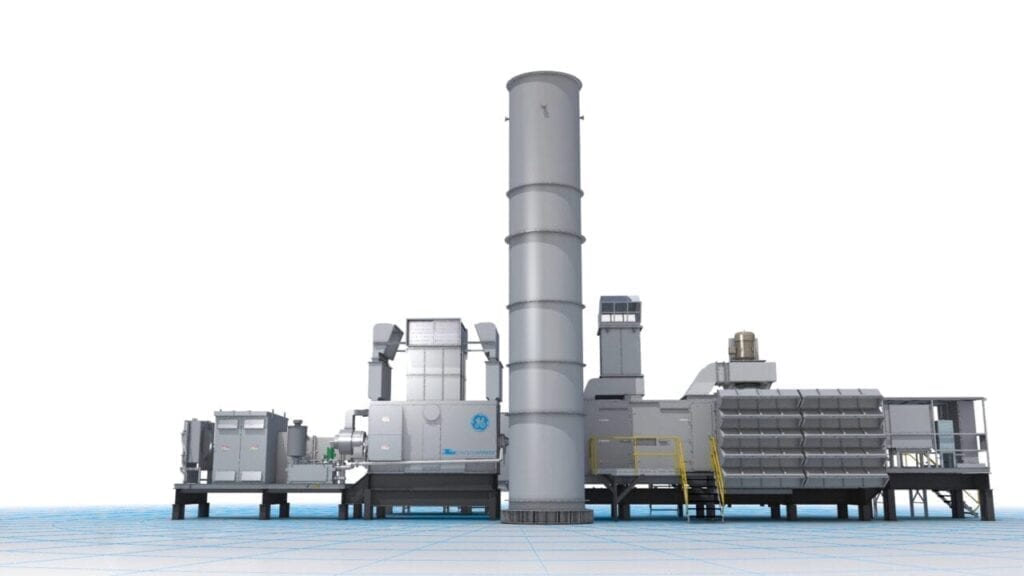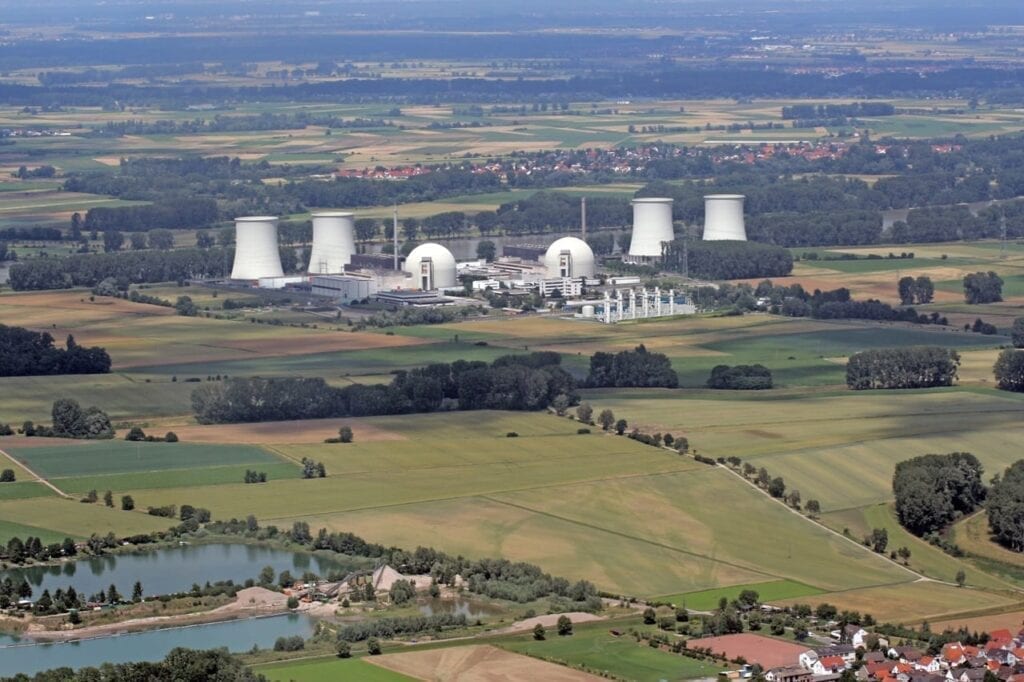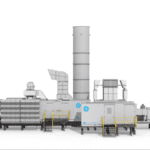RWE Generation will install 11 units of GE Gas Power’s freshly launched LM2500XPRESS power plant technology to provide a critical gas-power reserve in Germany’s reliability-challenged southern region.
The project will debut GE’s LM2500XPRESS, a “plug-and-play” power plant model it launched in January 2020 that features pre-packaged LM2500 aeroderivative gas turbines. Delivered in a simplified set of 10 modules with only 25 electrical interconnects—80% fewer than a traditional plant—an LM2500XPRESS plant has a 34-MW simple cycle output and a simple cycle efficiency of up to 39%. In a combined cycle configuration, it delivers up to 47 MW with up to 54.4% of efficiency.
Owing to its modularity—including systems whose flushing is completed at the factory—an LM2500XPRESS plant can be installed in as few as 13 days by 20 people, according to GE. It also features also a five-minute fast start with cycling and load following capabilities, the company said.
GE told POWER on Dec. 3 it launched the LM2500XPRESS to cater to a growing demand for “for fast, low emissions (without the need of water), permanent power in the market.” The LM2500XPRESS model differs from GE’s modularized TM2500, a trailer-mounted plant, which also features an LM2500 but is is designed for emergency, temporary power. Another key difference is that the TM2500 is equipped with a Single Annular Combustor (SAC) with water injection for nitrogen oxide (NOx) control, while the LM2500XPRESS has dry-low emissions (DLE) combustor technology, which avoids the need for water to control NOx.

A ‘Grid Stability’ Plant
At Biblis, a municipality in the Southern Hesse region of Germany, GE will install 11 LM2500 aeroderivative gas turbines, generators, fuel supply system, grid connection, and auxiliary equipment in a 300-MW plant that will be 95% factory assembled, it said. The project owned by RWE is expected to begin operation by October 2022.
“The system will not be available to the free electricity market, but will only be operated at the request of the network operator to ensure a safe and reliable power supply,” RWE explained. “The aim is to be able to provide electricity at short notice with a flexible gas-fired power plant in order to maintain system security in the future.”
RWE’s order with GE comes two weeks after the German generator won a contract with transmission system operator Amprion to build and operate a gas-fired “grid-stability” plant on a lot outside its two-unit Biblis nuclear power plant. Units A and B at the nuclear plant, which generated 500 billion kWh from 1974 to 2011, were decommissioned and dismantled in June 2017.

The Biblis reserve project is one of several projects solicited by Amprion, along with other transmission system operators TransnetBW and TenneT, to ensure grid stability under German law. The projects are considered critical as Germany shuts down all its nuclear plants by 2022 and moves to phase out coal power by 2038.
A Modern Peaker
As part of its energy transition—Energiewende—Germany intends to push renewables’ share to at least 65% of its total power mix by 2030. In 2017, wind power surpassed both nuclear and natural gas to become the second-largest source of electricity generation, and according to Agora Energiewende, a think tank partly funded by the European Climate Foundation, Germany’s consumption of renewable power rose to almost 43% in 2019.
Today, most of Germany’s wind capacity is located in the northern parts, but demand from metropolitan and industrial areas are highest in the south and west of the country. Compounding the expected surge in generation from wind and solar in the north are network constraints that prevent transmission from the north to the south, as well as delays in grid expansion. Meanwhile, Germany has only one bidding zone. The imbalance is expected to worsen when the last commercial nuclear plants close in the south and northwest in 2022.
“The imbalance has resulted in ‘re‑dispatch’ measures in the south (where grid operators order power stations to ramp up output to compensate for procured electricity that cannot make it south) and curtailment in the north (where grid operators order generators to shut down to avoid congestion), costing consumers hundreds of millions of euros annually,” the International Energy Agency noted in a recent brief.
As GE noted on Thursday, the south has “repeatedly faced critical situations, with imports arranged on short notice from surrounding countries required to stabilize the grid.” The LM2500XPRESS is well-suited to address the circumstances, noted Aman Joshi, senior global sales director for the Aeroderivative business at GE Gas Power.
“The rapidly progressing energy transition presents system operators and energy suppliers with the increasingly difficult task of continuously ensuring stability of the grid,” he said. “GE continues to invest in new technologies, such as the LM2500XPRESS power plant, as we consider renewables and gas power complementary. The combination of five-minute fast start with cycling and load following capabilities is ideal to help support grid stability and we’re excited to bring it to Biblis to help RWE to provide a reliable supply of energy.”
—Sonal Patel is a POWER senior associate editor (@sonalcpatel, @POWERmagazine).










